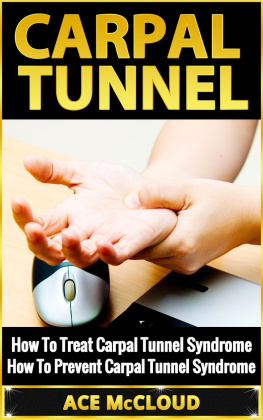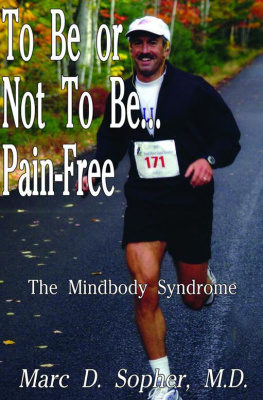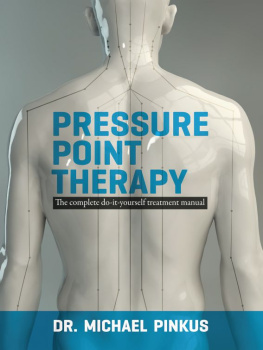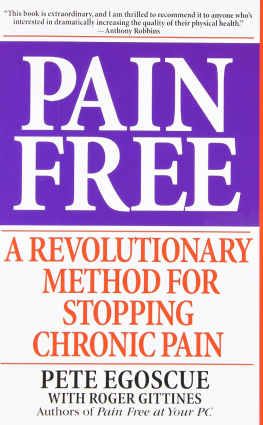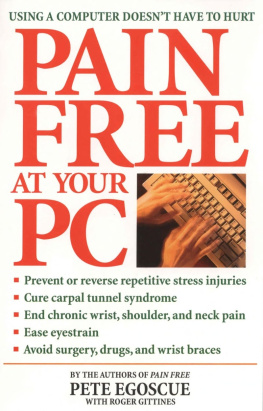Carpal Tunnel
How To Treat Carpal Tunnel Syndrome
How To Prevent
Carpal Tunnel Syndrome
By Ace McCloud
Copyright 2013
Disclaimer
The information provided in this book is designed to provide helpful information on the subjects discussed. This book is not meant to be used, nor should it be used, to diagnose or treat any medical condition. For diagnosis or treatment of any medical problem, consult your own physician. The publisher and author are not responsible for any specific health or allergy needs that may require medical supervision and are not liable for any damages or negative consequences from any treatment, action, application or preparation, to any person reading or following the information in this book. Any references included are provided for informational purposes only. Readers should be aware that any websites or links listed in this book may change.
Table of Contents
My Other Books and Audio Books

Be sure to check out my website for all my Books and Audio books.
www.AcesEbooks.com

Introduction
I want to thank you and congratulate you for buying the book, Carpal Tunnel Syndrome Solution: Diagnosing Carpal Tunnel Syndrome, How To Prevent Carpal Tunnel Syndrome, and How To Treat Carpal Tunnel Syndrome.
This book contains proven steps and strategies on how to diagnose, prevent, and treat carpal tunnel syndrome, a condition afflicting many individuals around the world.
Along with an overview of carpal tunnel syndrome, which includes factors believed to cause it and how to diagnose it correctly, this book will clearly outline the best prevention practices, along with doctor-prescribed and alternative treatments. Anyone looking to better understand carpal tunnel syndrome will benefit immensely from reading this book.

Chapter 1: Overview of Carpal Tunnel Syndrome
C arpal Tunnel Syndrome, also known as CTS, is a condition that is brought about by the pinching of the nerve in the wrist. The median nerve, as this nerve is called, runs from the brain and spinal cord all the way to the tips of the fingers, and is what allows the brain to communicate with the hands.
The condition earned the name because of the tunnel-like structure of the median nerve as it passes through in the wrist area: a tight ligament at the top, and the wrist bones at the bottom, both of which are extremely inflexible structures. Because of this, when there is a buildup of pressure in the carpal tunnel area, the nerve, pushing up against rigid material on all sides, has nowhere to go. It gets squished, causing it to function improperly.
Allowing this condition to persist can lead to several short term and long term consequences for you. Along with pain, tingling, and feelings of numbness, primarily in the fingers and hands area, leaving your carpal tunnel syndrome untreated can cause permanent medial nerve damage.
Over time, you may experience a decrease in grip strength, as the muscles of the hand begin to atrophy. The severity of your pain and cramping will also increase, as the nerve begins to deteriorate due to the tremendous swelling around it. Your nerve impulses may slow down; you may lose feeling in your fingers, and lose coordination and strength at the bottom of your thumb area. Eventually, untreated CTS can result in permanent muscle tissue deterioration, and ultimately, complete loss of all hand functions. If part of the reason for your carpal tunnel systems is from being online all the time or excessive playing of video games, you should definitely check out my book on Internet and Gaming Addiction.
While the link between repetitive movements and carpal tunnel syndrome is still not fully verified, employees who work in places that require repetitive tasks to be performed with their hands tend to experience the longest absences from their jobs and have a lower production rate due to the symptoms described above.
Chapter 2: How To Diagnose Carpal Tunnel Syndrome
W hile there are a host of symptoms that you can experience due to CTS, the telltale signs all revolve around pain, tingling, and numbness in the hand and fingers area. The most common symptoms include pain in the hand and wrist area, a feeling of weakness in certain hand muscles, and unusual tingling and numbing sensations in particular areas of the hand. Additionally, people suffering from CTS often comment that shaking their hand forcefully tends to relieve their symptoms temporarily.
While the areas affected from pain tend to be in the hand and wrist, the feelings of hurt may spread to the lower and even the upper arm. Pain is also generally reported as being more acute at night, possibly because some people turn over during their sleep and end up with their hand underneath them, with the full weight of their body on top of it.
To be certain that you have CTS and not just temporary feelings of pain, tingling, and numbness, there are some tests that either you or medical professionals can administer for a more complete diagnosis.
The first such exam is called Tinels Test. To perform Tinels Test, the median nerve is tapped along its path through the wrist. A worsening of the tingling sensation in the fingers during this test would indicate a possibly positive result for carpal tunnel syndrome.
The second such exam is called Phalens Test. To perform this test, push the back of your hands tightly together for one full minute. Doing so will compress the carpal tunnel area, and if the symptoms youve experienced thus far get worse, the test has indicated a positive result.
A third such exam, called Durkans Test, consists of applying firm pressure for up to thirty seconds to the palm area directly over the nerve. As with the previous two tests, a continuation or heightening of symptoms would mean the test has returned a positive result as well.
A more technical examination would involve sending electric impulses along the median nerve, and then looking for irregularities in nerve impulse conduction with a machine called an EMG. Given that the EMG exam is more involved, since it requires a visit to a medical professional, it does not typically need to be administered. However, if the symptoms you are experiencing are extremely severe or painful, an EMG exam may be necessary.
The causes of the compression of the carpal tunnel area, and thus carpal tunnel syndrome, continue to create controversy throughout the medical community, as a consensus has yet to be reached. Arthritis, diabetes, prediabetes (imperfect glucose tolerance) hypothyroidism, pregnancy, obesity, oral contraceptives, and trauma all are thought to bring on the onset of CTS. Also, repetitive movements of the fingers from typing, playing video games, or any other repetitive task using the hands and fingers over long periods of time is strongly linked to carpal tunnel syndrome. Genetics can also play a part in developing CTS.
Some researchers believe that the condition can be caused by intrinsic and extrinsic factors exerting pressure from both inside and outside of the tunnel. Benign tumors in the wrist area, for example, are one such factor that could aid the condition in developing.
Given the exponential increase in computer usage over the last couple of decades, the mouse and keyboard have become targets of blame for patients who suffer from CTS. Many believe that the repeated finger and wrist movements required for typing and mouse clicking can compress the tunnel area, pinching the median nerve. Correspondingly, other activities that involve repetitive finger and wrist movements, such as tennis, weightlifting, video games, and industrial shop work have been linked to carpal tunnel syndrome.
Next page
